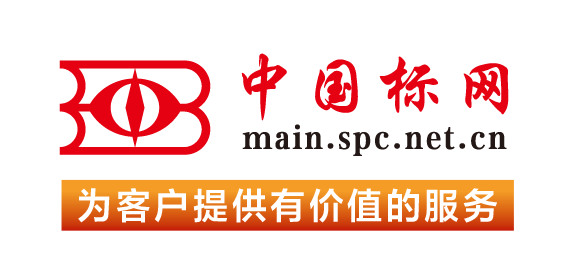This specification covers cold-drawn buttweld carbon steel tubes for use as round, square, rectangular or special shape mechanical tubing. The carbon steel can be made unless a specific type of melting process is required by the purchaser. Heat and product analysis shall be made to determine the specified percentages of chemical elements to which steel tubes shall conform to. The tubing shall be free of injurious defects and shall have a workmanlike finish. Unless otherwise specified, both outside and inside surfaces of the tubing shall be coated with a film of rust-retarding oil before shipping.1.1 This specification covers cold-drawn buttweld carbon steel tubes for use as mechanical tubing.1.2 This specification covers round, square, rectangular, and special shape mechanical tubing.1.3 Round tube size ranges covered are outside diameters up to 3 1/2 in. (88.9 mm) and wall thickness from 0.035 to 0.500 in. (0.89 to 12.70 mm).1.4 Optional supplementary requirements are provided and, when desired, shall be so stated in the order.1.5 The values stated in inch-pound units are to be regarded as standard. The values given in parentheses are mathematical conversions to SI units that are provided for information only and are not considered standard.1.6 This product is available in various grades (Section 6 Tables 1 and 2 and conditions (Section 5).1.7 This international standard was developed in accordance with internationally recognized principles on standardization established in the Decision on Principles for the Development of International Standards, Guides and Recommendations issued by the World Trade Organization Technical Barriers to Trade (TBT) Committee.
定价: 590元 加购物车
This specification covers round, square, rectangular, and special shape electric-resistance-welded carbon and alloy steel mechanical tubing produced by hot- or cold-rolling. The types of tubing covered here are: Type 1a, as-welded from hot-rolled steel (with mill scale); Type 1b, as-welded from hot-rolled pickled and oiled steel (mill scale removed); Type 2, as-welded from cold-rolled steel; Type 3, sink-drawn hot-rolled steel; Type 4, sink-drawn cold-rolled steel; Type 5, drawn over a mandrel; and Type 6, special smooth inside diameter. Heat and product analyses shall be made to determine the percentages of chemical elements, to which the steel specimens shall conform to. Tubing shall be free of injurious defects and shall have a workmanlike finish. When specified, tubing shall be coated with a film of rust retarding oil before shipping.1.1 This specification covers electric-resistance-welded carbon and alloy steel tubing for use as mechanical tubing.1.2 This specification covers mechanical tubing made from hot- or cold-rolled steel.1.3 This specification covers round, square, rectangular, and special shape tubing. Type Size Range(Round Tubing)Electric-Resistance-Welded Tubing from Hot-Rolled Steel outside diameter from 1/2 to 15 in. [12.7 to 380 mm] wall from 0.065 to 0.650 in. [1.65 to 16.5 mm]Electric-Resistance-Welded Tubing from Cold-Rolled Steel outside diameter from 3/8 to 12 in. [9.5 to 300 mm] wall from 0.022 to 0.134 in. [0.56 to 3.40 mm]1.3.1 Indeterminate wall thicknesses may be ordered. In those cases the more stringent tolerances of Tables 4, 6, 7, 8, 9, 10, 11, 12, 16, and 17 shall apply. When sizes within the allowable ranges are ordered all other requirements of the specification shall be met.1.4 This specification covers mechanical tubing in various Grades (see Section 5), Types (see 12.1), and Thermal Conditions (12.1).1.5 Optional supplementary requirements are provided and when desired, shall be so stated in the order.1.6 The values stated in either SI units or inch-pound units are to be regarded separately as standard. Within the text the SI units are shown in brackets. The values stated in each system may not be exact equivalents; therefore each system shall be used independently of the other. Combining values from the two systems may result in non-conformance with the standard. The inch-pound units shall apply unless the “M” designation of this specification is specified in the order. In this specification hard or rationalized conversions apply to diameters, lengths and tensile properties. Soft conversion applies to other SI measurements.1.7 This international standard was developed in accordance with internationally recognized principles on standardization established in the Decision on Principles for the Development of International Standards, Guides and Recommendations issued by the World Trade Organization Technical Barriers to Trade (TBT) Committee.
定价: 843元 加购物车
This specification covers seamless and welded black and hot-dipped galvanized steel pipe in NPS 1/8 to NPS 26. The steel categorized in this standard must be open-hearth, basic-oxygen or electric-furnace processed and must have the following chemical requirements: carbon, manganese, phosphorus, sulfur, copper, nickel, chromium, molybdenum, and vanadium. The tubing shall undergo a seamless or welding process. Tension, bend, and flattening tests shall be performed to make sure that it must adhere to the mechanical properties of the standard. The hydrostatic test shall be applied, without leakage through the weld seam or the pipe body. Nondestructive electric test shall be made to make sure that the full volume of the pipe must be in accordance with the standard. The purchaser shall have the right to perform any of the inspections and tests set forth in this specification where deemed necessary to ensure that the pipe conforms to the specified requirements.1.1 This specification2 covers seamless and welded black and hot-dipped galvanized steel pipe in NPS 1/8 to NPS 26 [DN 6 to DN 650] (Note 1), inclusive, with nominal wall thickness (Note 2) as given in Table X2.2 and Table X2.3. It shall be permissible to furnish pipe having other dimensions provided that such pipe complies with all other requirements of this specification. Supplementary requirements of an optional nature are provided and shall apply only when specified by the purchaser.NOTE 1: The dimensionless designators NPS (nominal pipe size) [DN (diameter nominal)] have been substituted in this specification for such traditional terms as “nominal diameter,” “size,” and “nominal size.”NOTE 2: The term nominal wall thickness has been assigned for the purpose of convenient designation, existing in name only, and is used to distinguish it from the actual wall thickness, which may vary over or under the nominal wall thickness.1.2 This specification covers the following types and grades:1.2.1 Type F—Furnace-butt-welded, continuous welded Grades A and B,1.2.2 Type E—Electric-resistance-welded, Grades A and B, and1.2.3 Type S—Seamless, Grades A and B.NOTE 3: See Appendix X1 for definitions of types of pipe.1.3 Pipe ordered under this specification is intended for mechanical and pressure applications and is also acceptable for ordinary uses in steam, water, gas, and air lines. It is suitable for welding, and suitable for forming operations involving coiling, bending, and flanging, subject to the following qualifications:1.3.1 Type F is not intended for flanging.1.3.2 When pipe is required for close coiling or cold bending, Grade A is the preferred grade; however, this is not intended to prohibit the cold bending of Grade B pipe.1.3.3 Type E is furnished either nonexpanded or cold expanded at the option of the manufacturer.1.4 The values stated in either SI units or inch-pound units are to be regarded separately as standard. The values stated in each system may not be exact equivalents; therefore, each system shall be used independently of the other. Combining values from the two systems may result in non-conformance with the standard.1.5 The following precautionary caveat pertains only to the test method portion, Sections 7, 8, 9, 13, 14, and 15 of this specification: This standard does not purport to address all of the safety concerns, if any, associated with its use. It is the responsibility of the user of this standard to establish appropriate safety, health, and environmental practices and determine the applicability of regulatory requirements prior to use.1.6 The text of this specification contains notes or footnotes, or both, that provide explanatory material. Such notes and footnotes, excluding those in tables and figures, do not contain any mandatory requirements.1.7 This international standard was developed in accordance with internationally recognized principles on standardization established in the Decision on Principles for the Development of International Standards, Guides and Recommendations issued by the World Trade Organization Technical Barriers to Trade (TBT) Committee.
定价: 843元 加购物车
This specification covers manganese-molybdenum and manganese-molybdenum-nickel alloy steel plates for use in welded pressure vessels. The steel materials shall be killed and shall conform to the required values of fine austenitic grain and shall also be heat treated. The steel specimens shall undergo heat analysis and product analysis and shall conform to the chemical requirements for carbon, manganese, phosphorus, sulfur, silicon, molybdenum, and nickel. Tension tests shall be performed wherein the steel specimens shall conform to the required values of tensile strength, yield strength, and elongation.1.1 This specification2 covers one type of manganese-molybdenum and four types of manganese-molybdenum-nickel alloy steel plates for use in the quenched and tempered condition for the construction of welded pressure vessels.1.2 Material under this specification is available in five types, designated “A”, “B”, “C”, “D”, and “E”. The material is also available in three classes having the following strength levels. Class Tensile Strength,ksi [MPa]1 80–100 [550 to 690]2 90–115 [620 to 795]3 100–125 [690 to 860]1.3 The maximum thickness of Class 1 and Class 2 plates is limited only by the capacity of the composition to meet the specified mechanical property requirements; however, current practice normally limits the maximum thickness to 12 in. [300 mm] for Types A through D and to 7 in. [180 mm] for Type E.1.4 The maximum thickness of Class 3 plates is 21/2 in. [65 mm] for Types A through D and 2 in. [50 mm] for Type E.1.5 The minimum nominal thickness of plates of all classes is 0.25 in. [6.5 mm].1.6 These alloy steel plates in the as-rolled condition are sensitive to cracking during transit and handling, particularly in thicknesses over about 1 or 2 in. [25 or 50 mm]. They should be shipped in the as-rolled conditions only by mutual agreement of manufacturer and the purchaser.1.7 Plates covered by this specification are often used in the beltline region of nuclear reactor vessels where the material properties may be affected by high levels of radiation. Appendix X1 provides some information pertinent to this usage.1.8 The values stated in either inch-pound units or SI units are to be regarded separately as standard. Within the text, the SI units are shown in brackets. The values stated in each system are not exact equivalents; therefore, each system must be used independently of the other. Combining values from the two systems may result in nonconformance with the specification.
定价: 515元 加购物车
 我的标准
我的标准 购物车
购物车 400-168-0010
400-168-0010











 对不起,暂未有相关搜索结果!
对不起,暂未有相关搜索结果!













